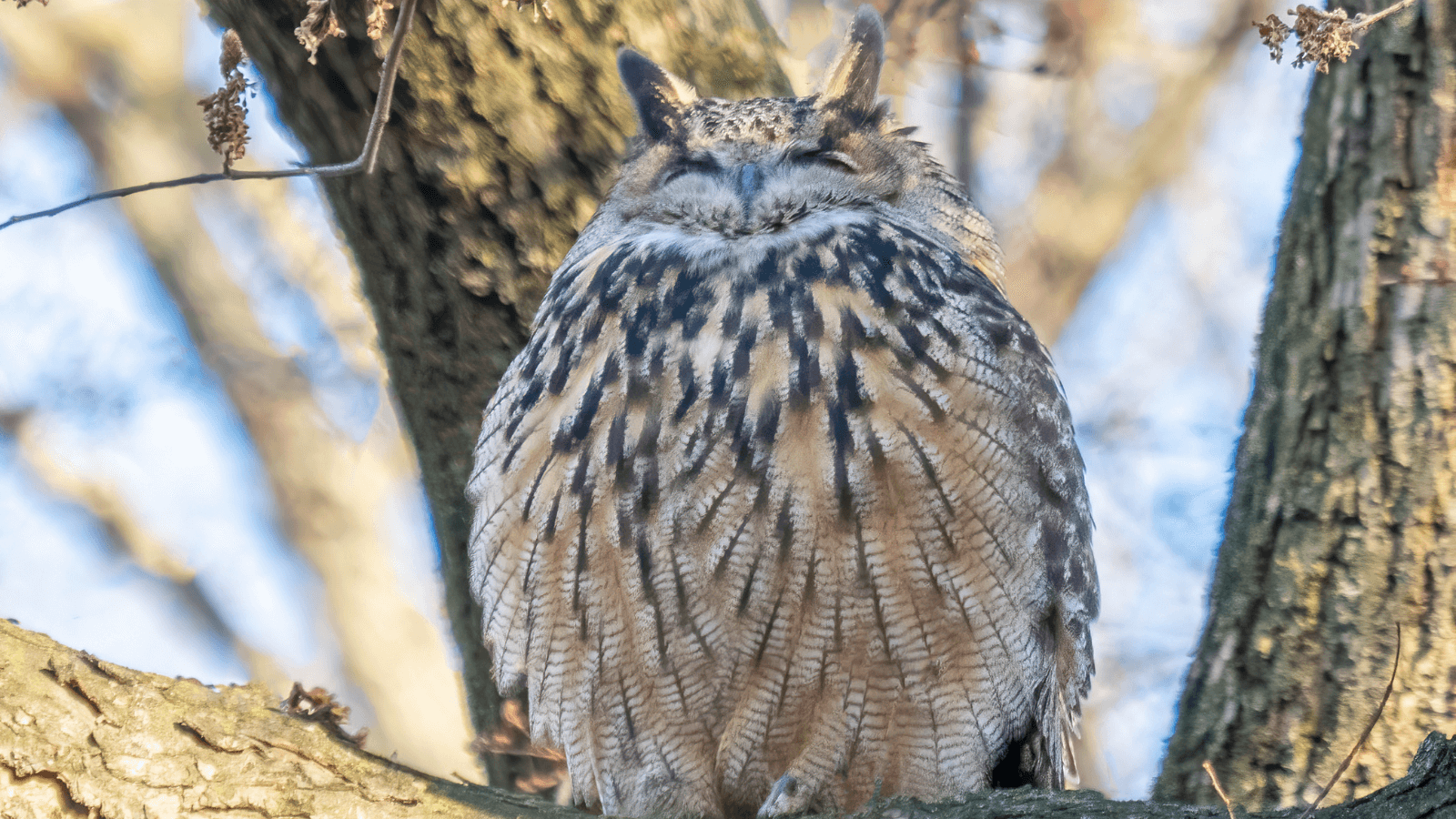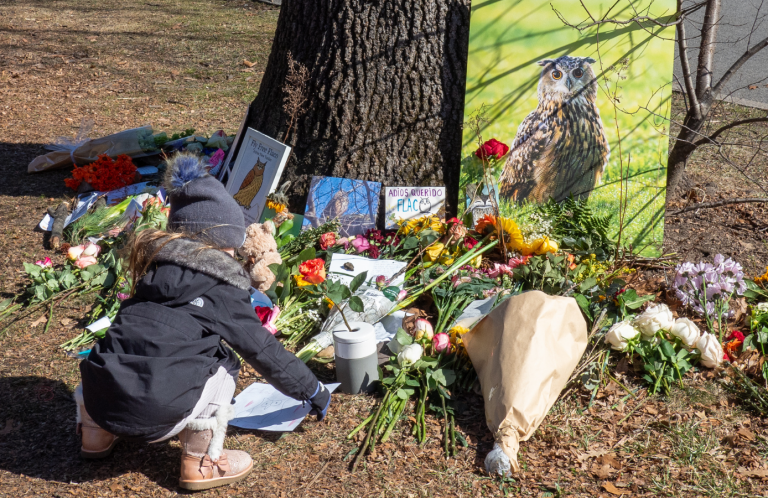Flaco the Owl's Death is a Call to Action for Bird-friendly Buildings

Flaco, an Eurasian Eagle-Owl, first gained fame when he escaped the Central Park Zoo after an act of vandalism of his enclosure over a year ago. His presence in Central Park drew bird lovers from New York City and beyond eager to catch a glimpse of an enigmatic — and very large — owl. Flaco captured the imaginations of people around the world and brought birds close to home for New Yorkers. Now, millions who were captivated by Flaco are mourning his loss after he died over the weekend, the result of a collision with a building.
Flaco's fate is shared by up to one billion birds each year in the United States, making collisions with buildings one of the leading causes of bird mortality. Flaco's death has spurred action in the New York State Senate, which announced it would rename its Bird Safe Buildings Act the FLACO (“Feathered Lives Also Count”) Act. If passed, the FLACO Act would require new and significantly altered state buildings to adopt bird-friendly designs, especially on windows. This measure would save countless birds' lives.
Solving a problem of this magnitude requires big thinking, bold ideas, and policy change, but you don't need to wait for legislation in your state to take action to prevent unnecessary bird deaths. As spring migration approaches, billions of birds will be on the move at night as they migrate to their breeding grounds. Simple actions can make this journey safer.
During migration, billions of birds navigate difficult human-made environments as they fly to their breeding grounds in the spring. Sadly, many will not reach their destinations. The problem grows in the fall as birds make the return trip south, this time with inexperienced juveniles joining the journey. These birds may not come from as far away as an Eurasian Eagle-Owl, but they are making flights of many thousands of miles, coming from as far away as Brazil.
Why Do Birds Hit Windows?
Most birds, such as the Indigo Bunting, migrate at night, using the stars to navigate. Light pollution at night and reflective glass surfaces during the day disorient them. When birds see plants or the sky reflected in windows, they do not know there is a barrier and think they can fly through it, then they collide with the glass.
The good news is, people can help. Given the loss of nearly 3 billion birds in the United States and Canada since 1970, American Bird Conservancy (ABC) is encouraging the following solutions to help birds survive and thrive.
Preventing Bird Collisions at Home
There are many ways to make your own windows bird-friendly. One of the easiest methods is to use external insect screens. If screens aren't an option, you can use a range of materials — tape, decals, strings, cords, and paint are options — to create window patterns that birds will interpret as solid objects to be avoided. Netting and shutters can also be helpful. Turning off unnecessary lighting at night during peak migration times each spring and fall can reduce light pollution.
Learn more about these home-friendly solutions, and for information about additional effective products that prevent collisions, visit ABC's Glass Collisions Products and Solutions Database.
How to Design and Legislate Bird-Friendly Buildings
Glass collisions from taller buildings kill vast numbers of wild birds each year. Yet most people know little about this danger, and even fewer are aware of the easy, attractive, and inexpensive solutions available to help prevent these deaths. Making new and existing buildings safer for birds is possible and can be cost neutral if bird-friendly design is considered from the outset of a project. Whether you want to reduce bird collisions at an existing building, design a new bird-friendly structure, or promote bird-safe building legislation, ABC has top-rated resources available for professionals in facility construction, renovations, operations, maintenance, and real estate development.
For a more in-depth look about bird-friendly building legislation solutions, read ABC and the Yale University Law, Ethics and Animals Program's newest report here.
Common Species that Collide with Windows
Researchers working in several U.S. and Canadian cities actively monitor bird-window collisions, gathering information on frequent-collider species each year. Certain migratory birds, such as the Black-and-white Warbler, Dark-eyed Junco, and White-throated Sparrow appear to be particularly vulnerable to this threat. For a list of species most likely to die from window collisions, learn more here.
What to Do with an Injured Bird
If a bird does collide with a window, it needs immediate attention. Most people may assume birds can cope and fly away right after a collision. However, birds often end up sustaining serious injuries such as bruising, eye ulcers, and fractures that prevent them from continuing their journeys.
Some common but subtle signs that indicate a bird is injured and in need of medical treatment by a licensed wildlife rehabilitator include the following:
- Allows you to pick it up.
- Cannot stand.
- Is not using both feet.
- Is squinting or shutting its eyes.
- Has open-mouthed or heavy breathing.
- Has puffed up feathers or tucks its head under its wings.
Contact your local wildlife rehab center for advice on how to further help.
Helping Birds Avoid Flaco's Fate
ABC has been a leader in the effort to reduce the massive toll of collisions on bird populations by evaluating products to reduce collisions, and providing resources and education for architects, developers, and homeowners. ABC also advocates for bird-friendly building legislation, like New York's FLACO Act, at the local, state, and federal levels.
Solving the crisis of window collisions requires collaboration. At the recent Multi-Sector Summit to Address Light Pollution and Bird Collisions hosted by the U.S. Fish and Wildlife Service, staff from ABC's Collisions Team joined partners from across the country to build national momentum to save birds. ABC and partners also continue to advocate for bird-friendly measures under the Migratory Bird Treaty Act.
Flaco's passing serves as a sad reminder of the fates of so many birds — and it is a call to action to prevent birds from dying in collisions with the built environment. Window collisions are a crisis, but an act as simple as treating windows at home can begin to make a world of difference.
###
American Bird Conservancy (ABC) takes bold action to conserve wild birds and their habitats throughout the Americas. Inspired by the wonder of birds, we achieve lasting results for the bird species most in need while also benefiting human communities, biodiversity, and the planet's fragile climate. Our every action is underpinned by science, strengthened by partnerships, and rooted in the belief that diverse perspectives yield stronger results. Founded as a nonprofit organization in 1994, ABC remains committed to safeguarding birds for generations to come. Join us! Together, we can do more to ensure birds thrive.
Media Contact
Jordan Rutter
Director of Communications
media@abcbirds.org


















































